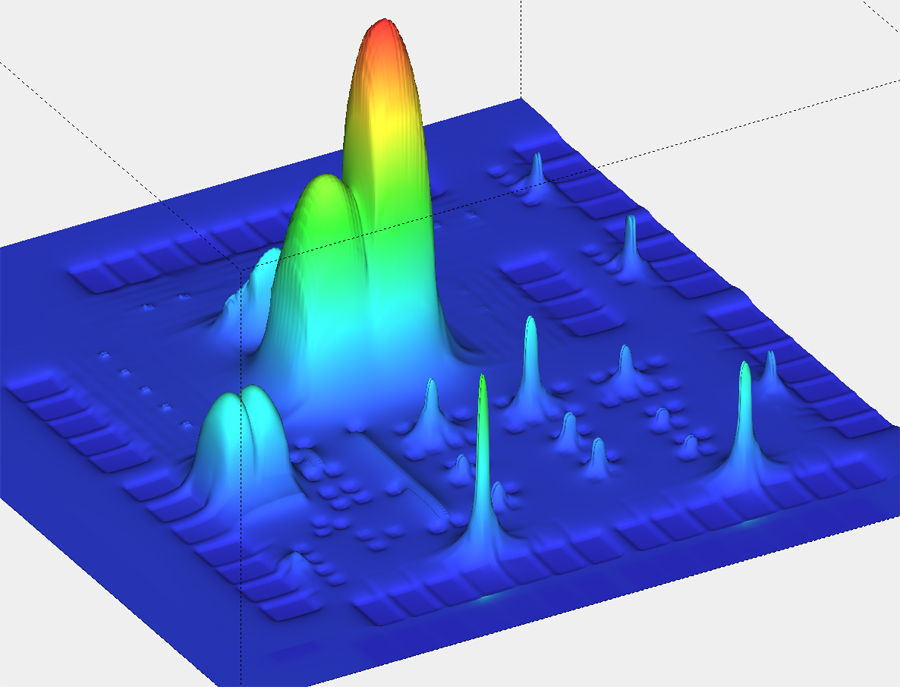 On Tuesday I had a Suite presentation from Jerome Toublanc, Principal Product Engineer at Apache.
On Tuesday I had a Suite presentation from Jerome Toublanc, Principal Product Engineer at Apache.
They are a private growing company founded in 2003 with a focus on power and noise integrity for chips, SIPs and packages.
Products Include
– RedHawk – SoC Power (dynamic voltage drop) Chip Power Model (8 0f 20 top semi clients)
– Sentinel (Optimal) – package/pcb power (13 of 20 top semi clients)
– Totem (new this year), analog IP power, transistor level (18 0f 20 top semi clients)
Worldwide the company hs: 100+ customers, 160 people, 50% R&D (Asia, Japan, Taiwan) , HQ in Valley.
Chip-package-system design risks are:
IP power, substrate noise
Chip Fmax
IO DDR jitter
EMC requirements at board level
The Value to solve these risks are:
Reduce costs (fewer board decoupling caps, number of package layers, signal pads to power pad ratio, area of IP blocks)
Tools offered by Apache are:
SOC – cell-based, Redhawk (LEF, DEF)
Create Chip Power Model (CPM) for use in Sentinel. Spiced-based model, open, current source and L.

Totem – transistor-level for IO, memory, full custom IC.
Create a macro-model for use in Redhawk

Sentinel – Package levels (Create RLCK or s-parameters for use in Redhawk)
The tool usage used to be just at tape-out, is my design OK for IR drop? Now the usage is during P&R or floor planning let’s do an IR drop analysis.

Requirements for noise analysis are:
Capacity – billion transistors full-chip
Accuracy – on-die inductance of power grids
Smart – no vectors, not depending on input stimulus
Packaging – the full package, using a field solver.
Chip Package System (CPS) – co-design needed, both frequency and time-based
Optimal was a 2.5D field solver, now the technology is full wave 3D solver
Redhawk -(competes with VoltageStorm/CDN) pdn prototyping, dynamic voltage drops, low power design verification, die model creation, impact on timing, power/signal EM. I know my IR drop, now the impact on clock timing.
– First release was SDL in 2003, single core cpu, flat designs, lumped RLC package, sign-off use, voltage island, clock gating. 90nm
– EV release in 2006, multi-core (2), caching, distributed RLCK package, prototype usage, MTCMOS, 65nm
– NX release in 2009, pattern matching, hierarchy, multi-port s-params for package, root cause identification, LDO switched RAM (45nm, 32nm)
Capacity of Redhawk:
2005, 60m nodes
2006, 142M nodes
2008, 400M nodes
2009, 751M nodes, use a 64 bit CPU
Redhawk GUI: intuitive IR drop highlighting looks like a web browser (Tcl/TK interface), text values with click to visualize resistance, length, IR drop
Totem – analog and full custom IC designs, transistor-level approach
– Grid weaknesses, power / signal em, static /dynamic ir, substrate noise, model creation
– Could run SPICE to see IR drop but you don’t see the GUI and colors
– Capacity of 100M devices in <12 hours simulation time
– Static and dynamic analyses
– Accuracy: power/ground, substrate, package concurrent, silicon measurement correlated (use own spice simulator: HSPICE, XA, Eldo, Spectre), simulate p/g grid with current sources
– Accuracy in white paper on the web
– Use the Open Access (OA)
Sentinel – package and board focus (extraction required)
– Use CPM model for each chip
– Size the pdn
– Signal integrity
– EMI/EMC for auto designers
– Thermal design
Models – Chip (power model, IO model, emission model, thermal model)
3D Full-wave extraction – packages, Fast FEM (FFEM) for full package and board together
– Integrated co-simulation of AC, DC, transient
Sentinel – SSO, EMI, Thermal,
Customer demos: Broadcom, rambus, tsmc, st, kobe u, cisco systems
Q: Models at 40nm or 28nm?
A: Yes, give us the layout info for each layer.
In summary – I see Apache as one of the brightest pre-IPO EDA companies in the industry because of their product focus and growth during a recession.



[…] Apache has created a handful of power and signal integrity point tools, and this acquisition will help them broaden their tool suite to include a Design For Power flow. I wrote favorably about Apache at DAC. […]